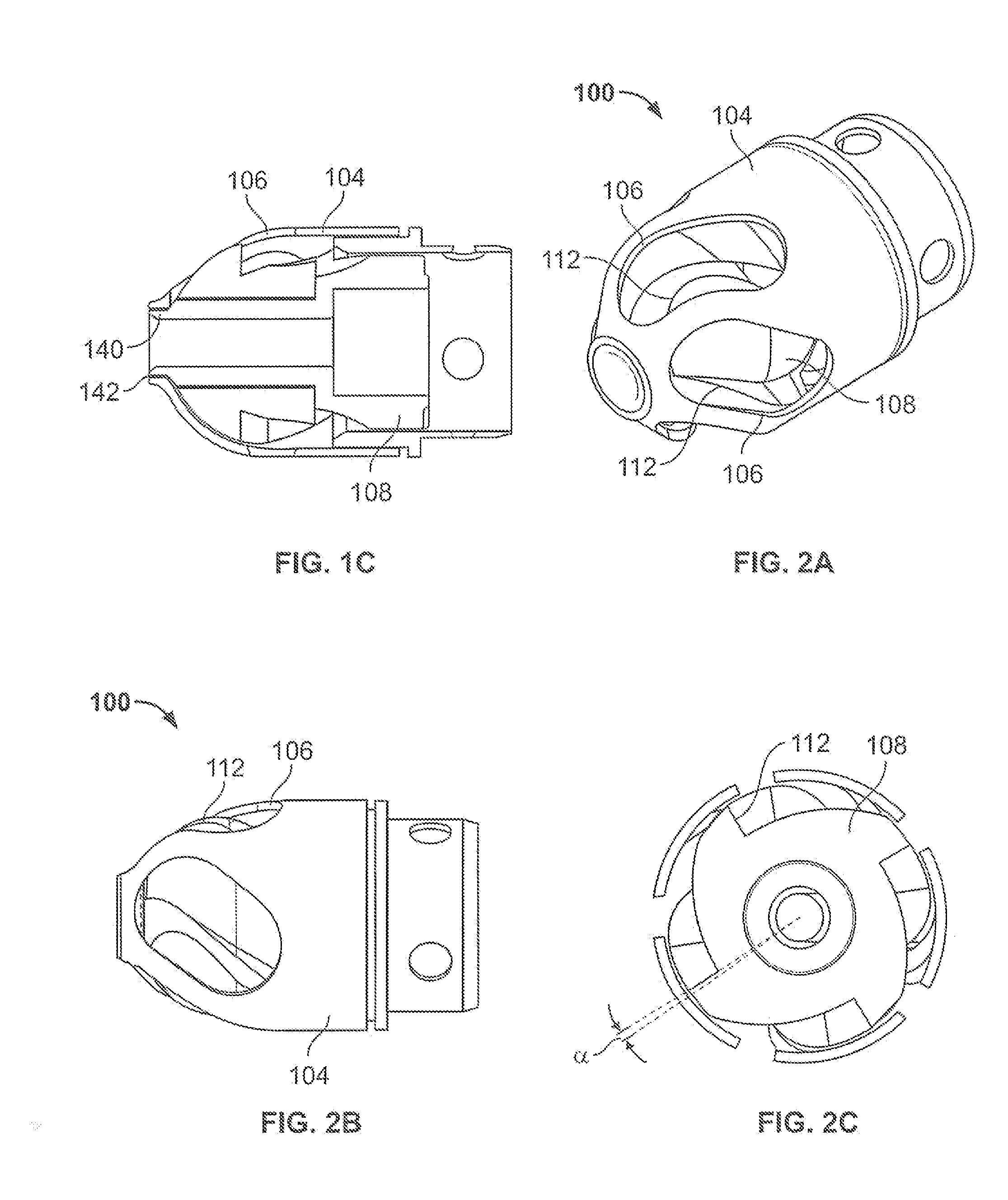Atherectomy devices and methods
a technology of atherectomy and lumen, which is applied in the field of treatment of occluded body lumens, can solve the problems of unacceptably high rate of restenosis, barotrauma to the vessel, and the embolization of a downstream vessel, and achieve the effect of better visualizing the obstruction
- Summary
- Abstract
- Description
- Claims
- Application Information
AI Technical Summary
Benefits of technology
Problems solved by technology
Method used
Image
Examples
Embodiment Construction
[0067]FIG. 1A illustrates an exemplary variation of a device 100 according to the present invention. As shown the device 100 includes a cutter assembly 102 affixed to a catheter or catheter body 120. As shown, the catheter body may be optionally located within an outer sheath 122. It is noted that the cutter assembly shown in the figures exemplary purposes only. Any cutter assembly may be combined with the other aspects the system The variations of cutter assemblies discussed herein, can be combined with other aspects of the system.
[0068]FIG. 1B illustrates an exploded view of the device 100 of FIG. 1A. As shown, in this variation the cutter assembly 102 includes a housing 104 with a plurality of openings 106. However, additional cutter assembly configurations (as noted below) are combinable with the various aspects of the device configurations discussed herein.
[0069] In the illustrated variation, a cutter 108 is located within the housing 104. This cutter 108 includes one or more...
PUM
 Login to View More
Login to View More Abstract
Description
Claims
Application Information
 Login to View More
Login to View More - R&D
- Intellectual Property
- Life Sciences
- Materials
- Tech Scout
- Unparalleled Data Quality
- Higher Quality Content
- 60% Fewer Hallucinations
Browse by: Latest US Patents, China's latest patents, Technical Efficacy Thesaurus, Application Domain, Technology Topic, Popular Technical Reports.
© 2025 PatSnap. All rights reserved.Legal|Privacy policy|Modern Slavery Act Transparency Statement|Sitemap|About US| Contact US: help@patsnap.com



